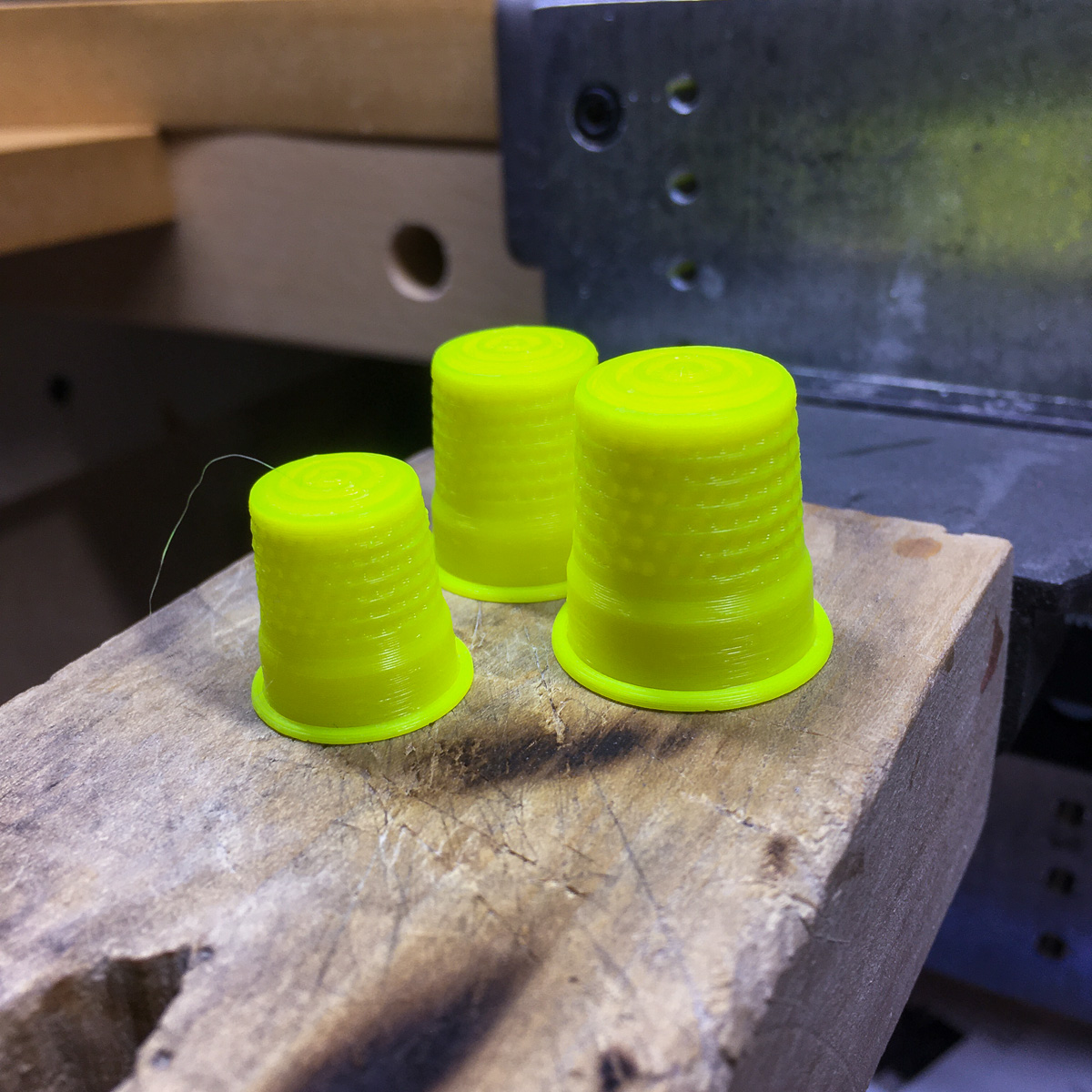A Return to ABS
 ABS ThimblesPerhaps I should title this as a question, as it isn’t anything permanent. Nothing in 3D printing seems permanent for me. Always trying new and revisiting the old. This case I am returning to ABS after a good while away from using the material.
ABS ThimblesPerhaps I should title this as a question, as it isn’t anything permanent. Nothing in 3D printing seems permanent for me. Always trying new and revisiting the old. This case I am returning to ABS after a good while away from using the material.
I had a partial spool of yellow ABS on the shelf for a couple of years. Just in the box with its bag of desiccant. The moisture issue in my opinion is far overblown (as most things these days). Here in North Texas, I don’t live in a humid tropical jungle with constant high-level saturated air moisture.
What is critical is the grains of moisture per cubic meter of ambient air. The true amount of moisture exposure, not the percentage air can hold. Enough about my view of the science but safe to say the two-year storage was not determent at ail to my old ABS filament.
I had a small project for outdoor use so I wanted to see how it would print in ABS. What is new to my printing is I now use a glass plate with hair spray for adhering the print. The small parts printed perfectly and loved the new stick down process. Not one sign of an edge warp.
Since It was loaded in my delta printer, ready to print some more, I finished off the spool with some larger prints. One was a cell phone case with a large flat (but thin) surface on the print bed. It was a perfect print. I realized what I have been missing with this material.
The last couple of meters of material went to printing ABS sewing thimbles for my wife. Again, absolutely perfect prints. I am now somewhat amazed.
I bought a new spool od ABS (red) and have continued re-discovering ABS printing. I am not experiencing the warping off the bed that made me shy away from this material. I am certain the warping issue is just lurking somewhere, but the glass and hairspray is far better than other print adhesion I have used with ABS.
No, I am not going to quote temps, speeds, etc. There is no one magic number. Use the manufacturers recommendations and work out your own numbers from there. It is not critical to a one-degree accuracy or magic mm/s. None of the hobbyist printers in existence on this planet are calibrated to the same (or any) absolute reference.
I’m rambling and mini-ranting. My point is supposed to be that I re-discovered ABS as a nice useable raw printing material. Technique was my issue, more than the material itself. The real issue as in every creative craft is the user knowing how to work with the material at hand.
Looking back on my purchase history, I determined I have purchased and used over 10 spools of ABS. But that is only 8% of my total purchases. I have experience with ABS but it has not been my material for everyday use.
A heated bed is necessary. An enclosed print area is good but not absolutely necessary. I don’t own an enclosed printer so that is one reason I stayed away from using a lot of ABS. That may still prove to be a reason. But I am seeing good prints without an enclosure. I am printing in a small office, not a large drafty open space or cold shop environment.
There is a small added benefit of ABS over PLA filament. The specific gravity (weight) is less per volume. Printing filament is sold by weight rather than volume or length. So, there is about 17% more length on a spool of ABS. The prints weight less, but more prints can be made.
The following pictures are some of the items I have just printed with ABS. Yellow is the old ABS and the red is the freshly opened new spool.
